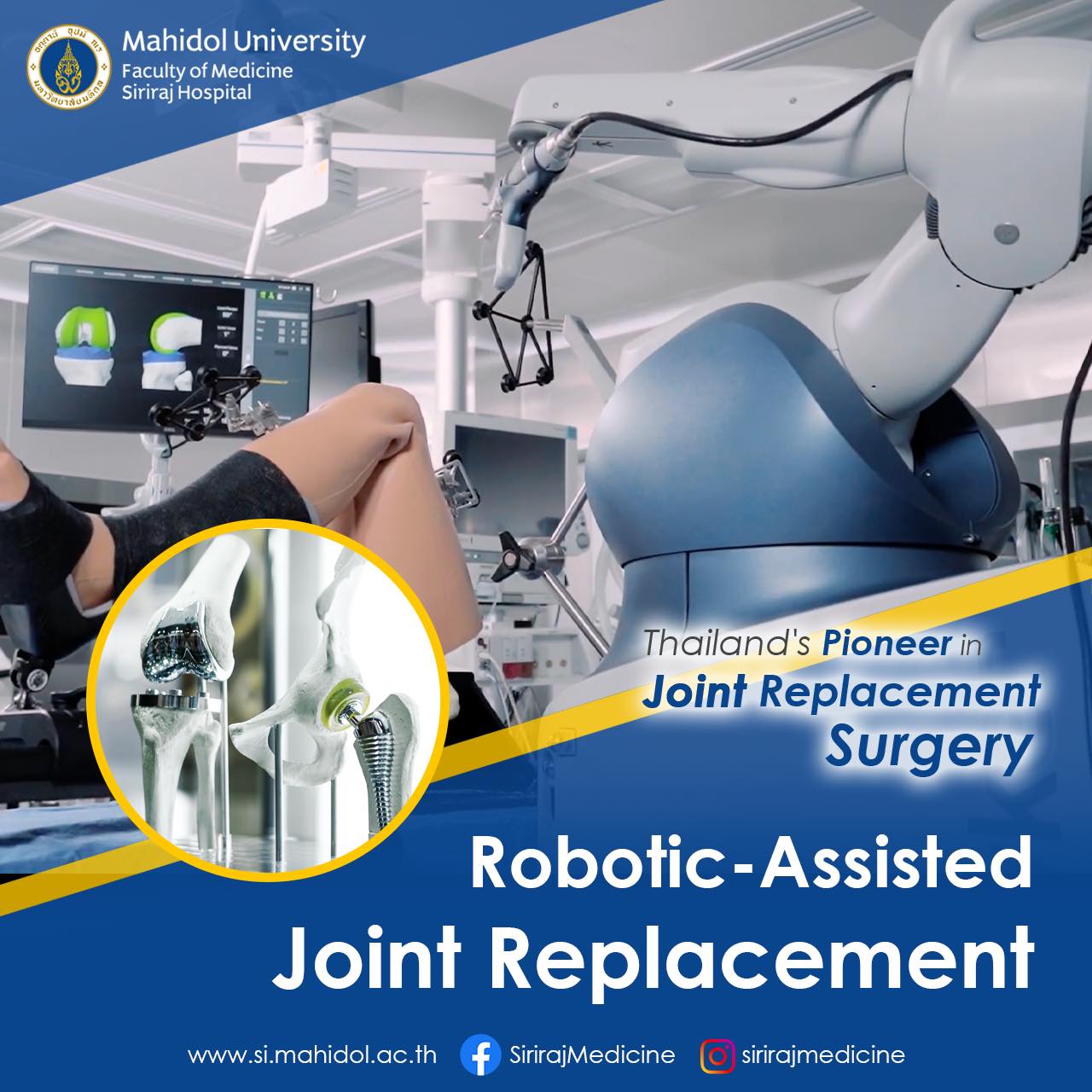First center of hip and knee joint replacement surgery
Faculty of Medicine Siriraj Hospital was one of the first center in Thailand that provided the hip and knee joint replacement surgery, about 50 – 60 years ago. As time passes, modern technologies improve, and the functions of new hip and knee joints, as well as their longevity, have significantly increased. During the past decade, robots have become more important in many fields including medicine. Robotic-assisted surgery aids joints replacement surgery, and the relevant software has been developed to its best for not just total hip, total knee replacement, but even many small joints such as a patellofemoral joint replacement can be performed now.
Robotic assisted joint replacement
Many advantages can be achieved from this advancement such as:
- “The virtual simulation before actual surgery”. A software renders 3D images of the patient’s joint structures, allowing doctors to plan the most precise operation possible for each patient. The virtual simulation could even improve the safety of the surgery.
- “The precision and accuracy”. Especially in complex cases whose bone or soft tissue have been severely damaged or deformed. For example, the arm of the machine will work according to the pre-operative plan and will stop once the procedure is made out of line more than 1 millimeter. This greatly helps in perfect alignment of the prosthesis which is crucial in joint replacement surgery. It also overcomes the surgeon’s experience dependent situation in the past.
- “Fast recovery”. The delicacy of the robot could save the major surrounding tissues, such as arteries, veins or nerves, resulting in smaller wound size, less pain and rapid recovery after surgery. The patient can walk within 12-24 hours after surgery.
Siriraj The first hub of Thailand
Right now, in Thailand, Faculty of Medicine Siriraj Hospital is the first one to use this technology. SI Elite Hip and Knee Replacement Excellence Center has been established to serve the patients of the three hospitals: Siriraj Hospital, Siriraj Piyamaharajkarun Hospital, and the Golden Jubilee Medical Center. At the beginning, the robot took longer time than conventional technique, but right now after about 6 months training, the surgical time is not over than 5 minutes when compared to the conventional technique. Since we began utilizing the robot last year, we have completed 120 cases of robotic-assisted joint replacement, the majority of which were knee joint replacements, with excellent results.
We hope to become a referral center and a learning center in the near future, employing this robot to improve the quality of life for patients and to allow doctors from other hospitals across the country to learn the new techniques. We also plan to use telemedicine for patients’ follow up during their recoveries at home.


 Published
Published